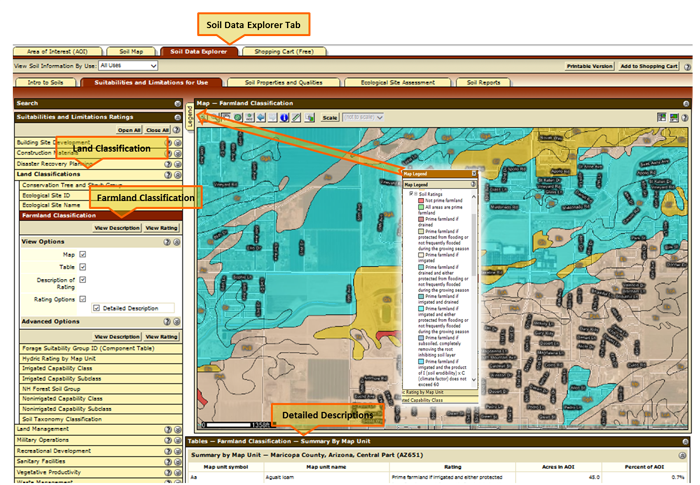Prime and Unique Farmlands
Prime and Unique Farmlands
The Natural Resources Conservation Service (NRCS) keeps a current inventory of prime and unique farmland in the US. The objective of the inventory is to identify the extent and location of important rural lands needed to produce food, feed, fiber, forage, and oilseed crops. Prime and unique farmlands are defined in 7 CFR Part 657. Farmland considered in NEPA documents includes:
- Prime
- Unique
- Other than prime or unique that is of statewide importance
- Other than prime or unique that is of local importance
Form and Instructions
Determination of farmland status is made through review of the Natural Resources Conservation Service Web Soil Survey.
Steps to access the appropriate data:
- From the website, access the Web Soil Survey as indicated.

- Using the navigation tools, zoom in the project area. Once zoomed in, use the appropriate tools to identify the Area of Interest (AOI). Note: The AOI must be less than 10,000 acres. Once defined, the AOI will appear outlined in blue.
- With the AOI defined, select the “Data Explorer” tab near the top of the page. The map will now reflect the soil types in the project area.
- To identify the type of farmland, click on “Land Classification” on the left side of the map, click on “Farmland Classification”, and check all boxes under the “View Options”, then click “View Rating”. The map will be color-coded to reflect farmland classification. The legend can be revealed with the tab to the left of the map and detailed descriptions are located below the map.

As part of a CE, EA or EIS analysis, the Farmland Conversion Impact Rating (Form AD 1006) should be completed. If the Land Evaluation and Site Assessment score from the Farmland Conversion Rating form is 160 points or greater, avoidance alternatives should be considered to avoid farmland impacts. If avoidance is not possible, measures to minimize or reduce the impacts should be evaluated and, where appropriate, included in the proposed action.
